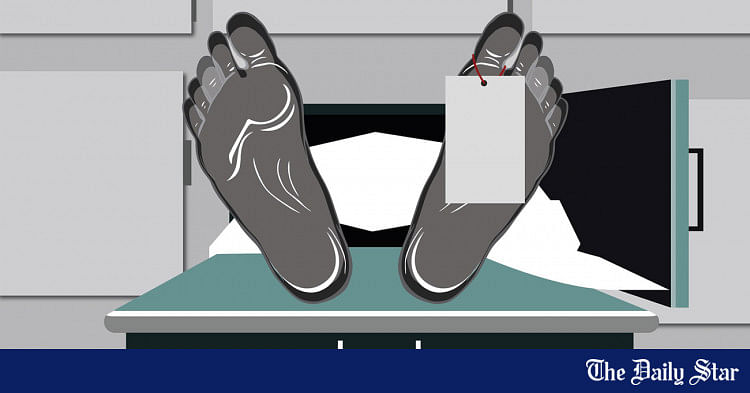Saif
Senior Member
- Joined
- Jan 24, 2024
- Messages
- 15,416
- Nation

- Axis Group


Hundreds of Rohingyas await to enter Bangladesh
Breaking News, International News & Multimedia
thedailynewnation.com
Hundreds of Rohingyas await to enter Bangladesh
22 Apr 2024, 12:00 am
Staff Reporter :

Thousands of Rohingyas have sought refuge along the banks of the Naf River on the Myanmar side, waiting to cross into Bangladesh amidst escalating conflict between the military junta and rebel factions in the Arakan region.
Sources report that Myanmar is in turmoil due to the ongoing warfare between the junta and armed rebel groups.
According to reports, hundreds of Rohingya men, women, and children have gathered on the banks of the Naf River near Teknaf, attempting to enter Bangladesh.
In response, law enforcement authorities are taking stringent measures to prevent Rohingya infiltration into Bangladesh.
Law enforcement is maintaining a vigilant watch both day and night to ensure tight security.
Despite these efforts, locals claim that several Rohingyas have managed to clandestinely enter Bangladesh.
It's estimated that around 2,000 Rohingyas are seeking to enter Bangladesh, hiding in various areas along the border.
Additionally, there have been instances of pushback after the detention of some Rohingyas arriving by boat. This situation has persisted along the border for several days.
Sources said several thousand Rohingyas have come and taken shelter in different places on Shahporir Island since April 11, (the night of Eid).
They took shelter with their relatives in Rohingya camps. However, BGB claims that they are not aware of any Rohingya infiltration.
Meanwhile, pushbacked Rohingya claims, this time, along with the Myanmar army, the Arakan Army (AA), the armed forces of the Mugads, have attacked the Muslim minority in Rakhine. They are trying to move away as the conflict escalates.
The Bangladesh Coast Guard held a Rohingya-laden boat carrying 26 people while infiltrating along the Golapara Jhowban near the Naf River on Shahparir Island on Tuesday.
A Coast Guard official confirmed this information and said that the Rohingyas who infiltrated will be pushed back after verification.
According to Rohingya sources, several thousand Rohingyas are currently hiding in Mandipara Char across the Naf River, trying to enter Bangladesh through Shahparir Island. Sensing the opportunity, they are waiting to infiltrate.
Locals said there was a movement of suspects in the Jhowbagan and Kachubaniya remote fields of Teknaf Shahparir Island. Local people usually avoid going there because of the remoteness and poor communication system.
BGB members are not easily seen patrolling there. Rohingyas are trying to enter Bangladesh by choosing this difficult route.
Meanwhile, local people said that some Rohingyas have entered by getting help from four brokers on Shahparir Island. They alleged that the brokers take Tk 20,000 to 25,000 per person.
Most of the fleeing Rohingyas are residents of Buthedong village in Rakhine. Several of them are from some villages in Mangdu.
22 Apr 2024, 12:00 am
Staff Reporter :
Thousands of Rohingyas have sought refuge along the banks of the Naf River on the Myanmar side, waiting to cross into Bangladesh amidst escalating conflict between the military junta and rebel factions in the Arakan region.
Sources report that Myanmar is in turmoil due to the ongoing warfare between the junta and armed rebel groups.
According to reports, hundreds of Rohingya men, women, and children have gathered on the banks of the Naf River near Teknaf, attempting to enter Bangladesh.
In response, law enforcement authorities are taking stringent measures to prevent Rohingya infiltration into Bangladesh.
Law enforcement is maintaining a vigilant watch both day and night to ensure tight security.
Despite these efforts, locals claim that several Rohingyas have managed to clandestinely enter Bangladesh.
It's estimated that around 2,000 Rohingyas are seeking to enter Bangladesh, hiding in various areas along the border.
Additionally, there have been instances of pushback after the detention of some Rohingyas arriving by boat. This situation has persisted along the border for several days.
Sources said several thousand Rohingyas have come and taken shelter in different places on Shahporir Island since April 11, (the night of Eid).
They took shelter with their relatives in Rohingya camps. However, BGB claims that they are not aware of any Rohingya infiltration.
Meanwhile, pushbacked Rohingya claims, this time, along with the Myanmar army, the Arakan Army (AA), the armed forces of the Mugads, have attacked the Muslim minority in Rakhine. They are trying to move away as the conflict escalates.
The Bangladesh Coast Guard held a Rohingya-laden boat carrying 26 people while infiltrating along the Golapara Jhowban near the Naf River on Shahparir Island on Tuesday.
A Coast Guard official confirmed this information and said that the Rohingyas who infiltrated will be pushed back after verification.
According to Rohingya sources, several thousand Rohingyas are currently hiding in Mandipara Char across the Naf River, trying to enter Bangladesh through Shahparir Island. Sensing the opportunity, they are waiting to infiltrate.
Locals said there was a movement of suspects in the Jhowbagan and Kachubaniya remote fields of Teknaf Shahparir Island. Local people usually avoid going there because of the remoteness and poor communication system.
BGB members are not easily seen patrolling there. Rohingyas are trying to enter Bangladesh by choosing this difficult route.
Meanwhile, local people said that some Rohingyas have entered by getting help from four brokers on Shahparir Island. They alleged that the brokers take Tk 20,000 to 25,000 per person.
Most of the fleeing Rohingyas are residents of Buthedong village in Rakhine. Several of them are from some villages in Mangdu.









































